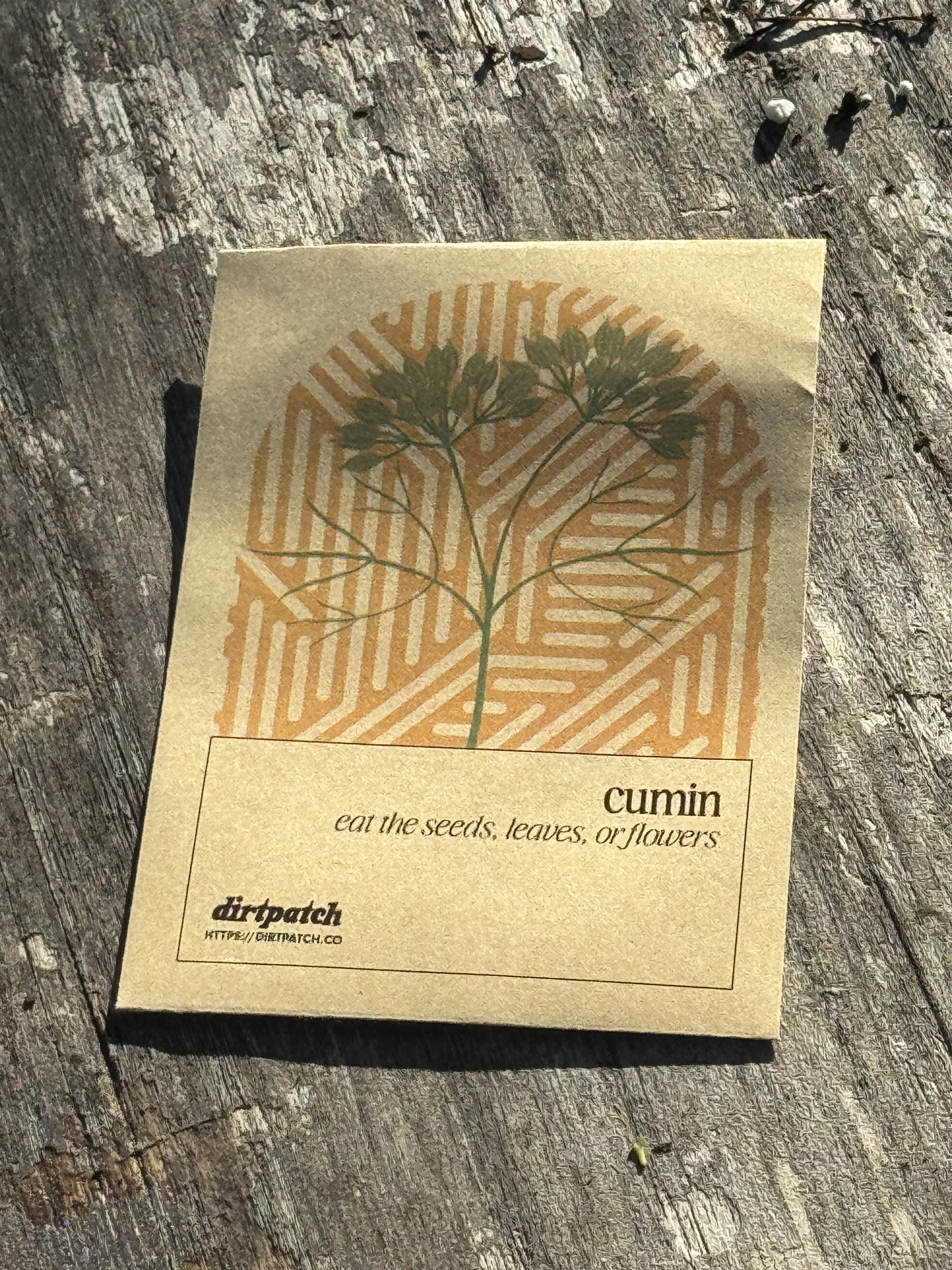Growing Instructions
Cumin thrives in hot, sunny conditions and does best in regions with a long growing season. Direct sowing is preferred because cumin is very sensitive to root disturance during transplanting. Sow the seeds 1/4" deep. Plant in groups of a few seeds, spaced 4"–8" apart in rows 12"–18" inches apart. The plants are slender, so clustering a few together can help them support each other as they grow. You can expect sprouts in 1–2 weeks. Because it requires about 120 days from planting to produce mature seeds, many gardeners in cooler zones start cumin indoors. If you decide to transplant, sow seeds 1/4" deep in biodegradable pots or modules (which will help avoid disturbing roots when transplating) 6–8 weeks before your last frost. Keep them warm (70–80° is optimal for germination) and moist. Transplant very carefully after all danger of frost has passed and the soil has warmed. Choose a planting location with full sun since cumin absolutely loves sunshine and heat. Cumin prefers well-drained, fertile soil that is neutral to slightly alkaline (about pH 7.0–7.5). Water young plants regularly, but once established, keep soil moderately moist and allow the topsoil to dry out between waterings. Overwatering can lead to root rot.
Harvest, Storage, and Use
With a long grow period, patience is key with cumin. Watch the plants closely as they finish flowering. The seeds are ready to harvest when the little flower clusters dry out and turn brown. Don’t wait too long, though, because once fully dry, the seeds can shatter and drop to the ground. The best method is to cut the entire stem of each brown, dried seed head. Bundle a handful of these stems and place them upside down in a paper bag, then let them dry further in a warm, airy spot for about 7–10 days. After that, most seeds will have dropped into the bag, so you can shake or gently crush the heads to release any remaining seeds. Once the seeds are out of the heads, pour the contents through a fine sieve or your fingers to separate out the chaff. Ensure the seeds are fully dry (they’ll be tan-brown and give off a strong, warm aroma) before storing. Keep your cumin seeds in an airtight container in a cool, dark place, and they will stay potent for up to two years when stored properly. While the seeds are the main event, cumin's young leaves are edible, too. They have a mild parsley-like taste and can be snipped sparingly to toss in salads for a novel twist.
When cooking, you’ll notice the difference in freshness immediately. You can use the whole seeds in dishes like Indian tempering (tadka) or Mexican sofrito, fry them in oil to release their flavor, or grind them into powder for recipes. For maximum flavor, many cooks toast the seeds lightly in a dry pan before grinding.
| 👍 Good companions | Cumin may repel some pests from crops | ||
| 👎 Bad companions | No known bad companions! | ||
| Growing zones | 5-10 | Crop type | Annual |
| Crop difficulty | Mid | Seed type | Open-Pollinated |
| Sowing method | Direct Sow Recommended | Containers? | Yes |
| Sun req. | Full Sun | Ideal soil temp. | 65-86°F |
| Days to germination | 7-14 days | Days to maturity | 100-120 days |
| Seed spacing | 4"-8" | Row spacing | 24" |
| Seed depth | 1/4" | Needs support? | No |

